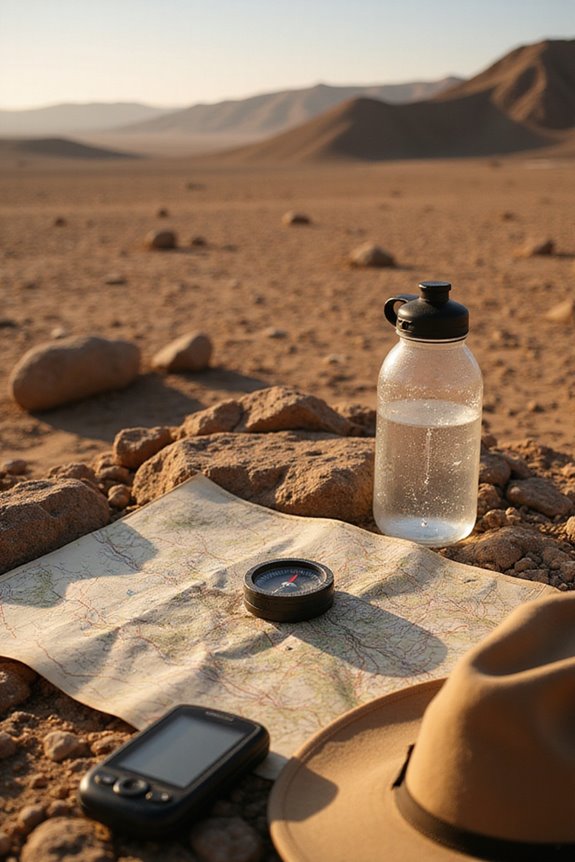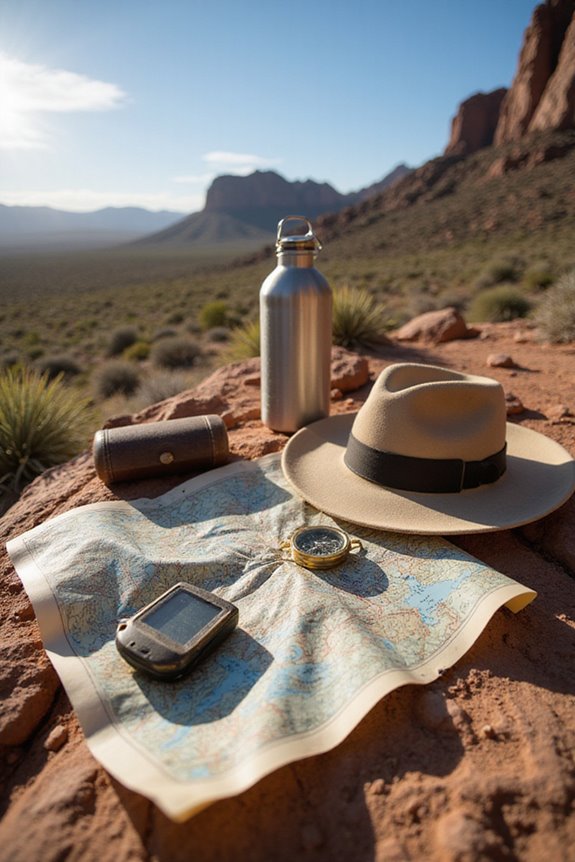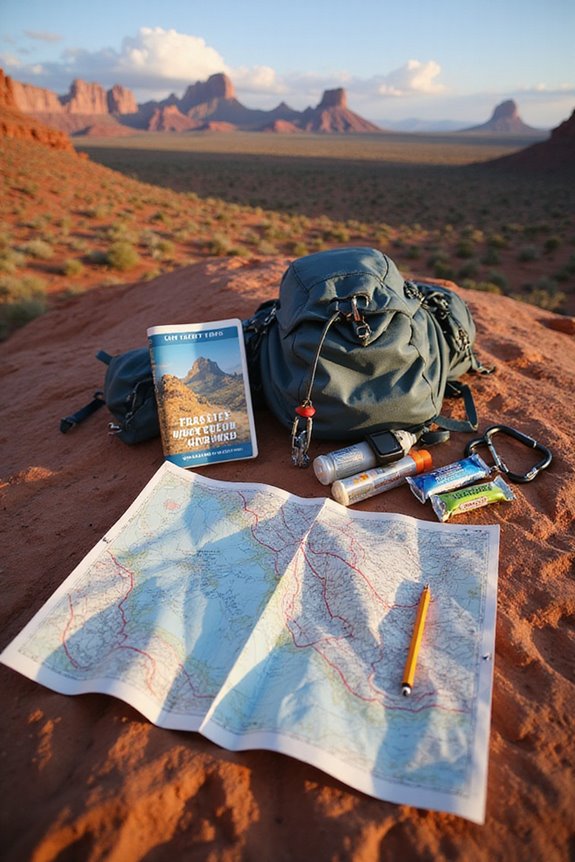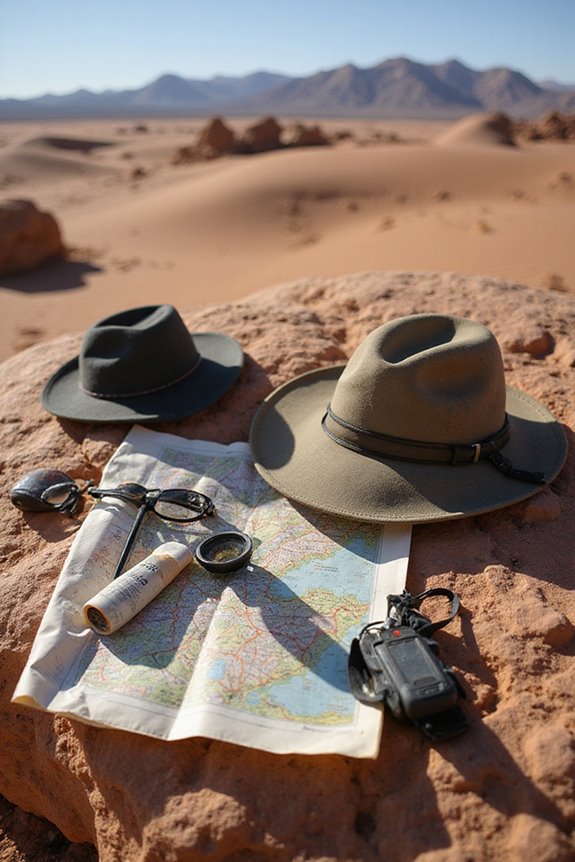When we hit the desert, we’ve got to be smart about navigation! First, pack a reliable GPS like the Garmin eTrex 32x—it’s a game-changer with its 3-axis compass and barometric altimeter. Don’t forget a traditional compass as a backup. We’ve got the sun and stars on our side too! Plus, keeping an eye on landforms like ridges can guide us. Stay hydrated, and who knows, we might just stumble upon our next adventure! Let’s explore more tips!
Key Takeaways
- Use a reliable compass and GPS device, like the Garmin eTrex 32x, for real-time tracking and navigation accuracy.
- Employ natural navigation techniques, such as using the sun and stars for orientation during the day and night.
- Stay hydrated by regularly sipping water from an insulated bottle to manage heat effectively.
- Familiarize yourself with terrain features, like ridges and riverbeds, to assist in navigation without modern tools.
- Always carry a backup compass and survival gear, including thermal blankets, for emergencies during desert expeditions.
Essential Navigation Tools for the Desert
When it comes to traversing the vast, sun-baked expanse of the desert, having the right tools can be the game-changer we all need! We can’t stress enough the importance of compass types; a reliable compass not only aligns with Earth’s magnetic field but keeps us on track in featureless terrain. And let’s face it, losing a compass sucks—so carrying a backup is a smart move! Devices like the Garmin eTrex 32x with its 3-axis compass and barometric altimeter are particularly valuable for accurate desert navigation. Now, couple that with GPS features that track real-time location and elevation, and we’re golden. These devices shine when visibility is poor or landmarks are scarce. Just remember, we should haul extra batteries or solar chargers to keep the adventure rolling! With these tools, we’re not just wandering; we’re exploring with purpose, embracing our freedom in the desert!
Traditional and Natural Navigation Techniques
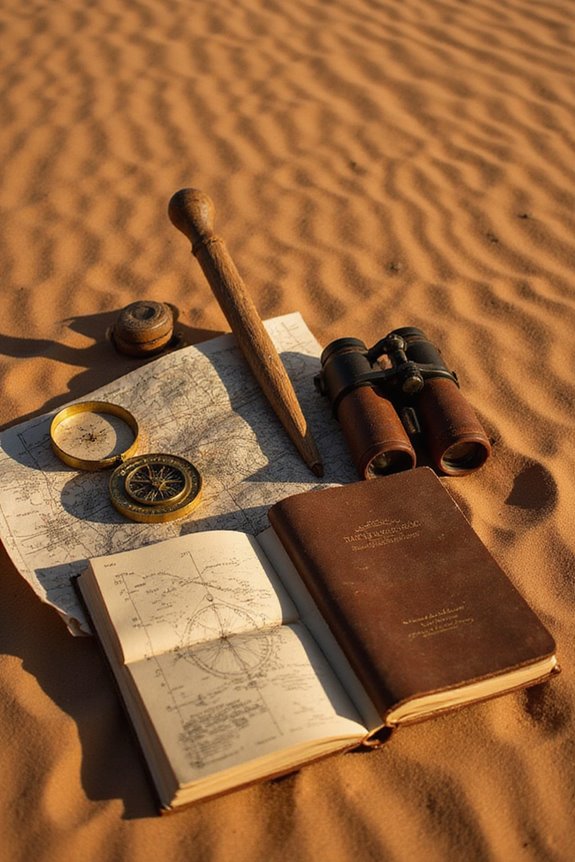
As we set out on our desert adventures, harnessing traditional and natural navigation techniques can truly elevate our experience. Who needs a GPS when the stars are lighting our path? By using star navigation, especially the North Star, we can orient ourselves at night and maintain our course like seasoned explorers. During the day, the sun offers a reliable east-west guide that’s hard to beat!
Let’s not forget about the wind patterns! The way the dunes lean tells us where the prevailing winds blow, while subtle landforms hint at directions. It’s nature’s very own map! By tapping into these cues, we’re not just trekking; we’re dancing with the desert, following its rhythm and embracing our adventurous spirit. Let’s get lost in freedom! In emergency situations, carrying survival gear like thermal blankets can be life-saving if you become disoriented in rapidly changing desert conditions.
Techniques for Navigating With Minimal Equipment

Maneuvering the vast expanse of the desert doesn’t have to rely solely on fancy gadgets—just a pinch of know-how can get us through! We can thrive with a simple compass, but remember to calibrate it away from any metallic distractions to keep things accurate. And don’t forget that shadow stick technique; just grab a straight stick, mark the shadow’s tip, and wait a bit. Bingo! We’ve drawn our east-west line!
We should be aware of the sun’s path—rising in the east, setting in the west—and use the terrain to guide us, like those ridges and dry riverbeds. For more challenging environments, consider a Garmin device with multi-GNSS support that provides location precision of 6 feet or better even in remote areas. Embrace our freedom out here as we navigate with confidence. Trust in the methods, and adventure awaits!
Environmental and Physiological Considerations
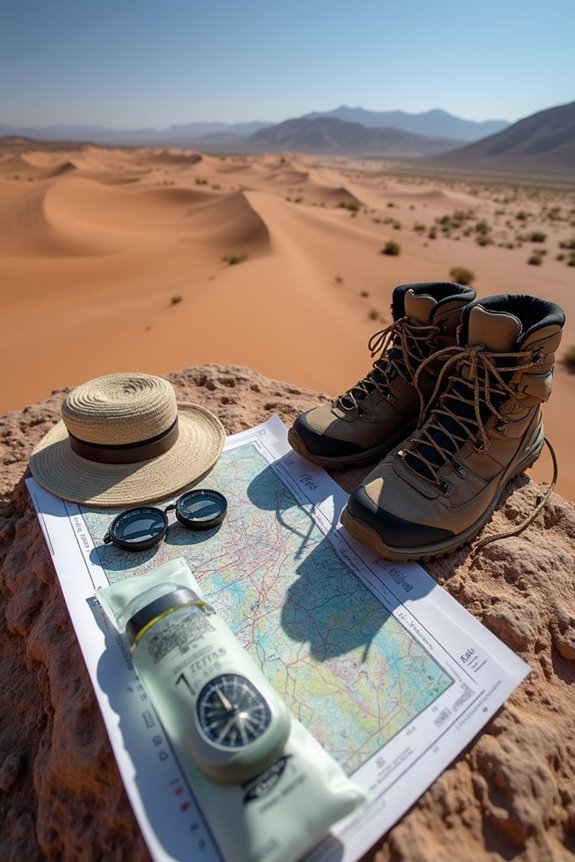
Despite the thrill of the desert landscape, we can’t ignore the challenges it throws our way! When it comes to heat management, hydration is our best friend—let’s keep those water bottles filled and sip regularly. We’ve got to dress smart, too; lightweight, breathable clothing saves us from sunburns and keeps us cool.
Visibility challenges pop up in the blink of an eye during sandstorms, don’t they? We should always have goggles and face coverings handy to shield ourselves from those pesky particles. And remember, seeking shade during intense heat can preserve our core body temperature and stamina. Steering through the desert requires our full attention; those little details can mean the difference between adventure and trouble. Let’s tackle this wild terrain together! For extended desert treks, a 40 oz capacity insulated water bottle can maintain cold water for up to 48 hours, keeping you properly hydrated in extreme heat conditions.
Planning and Safety Strategies
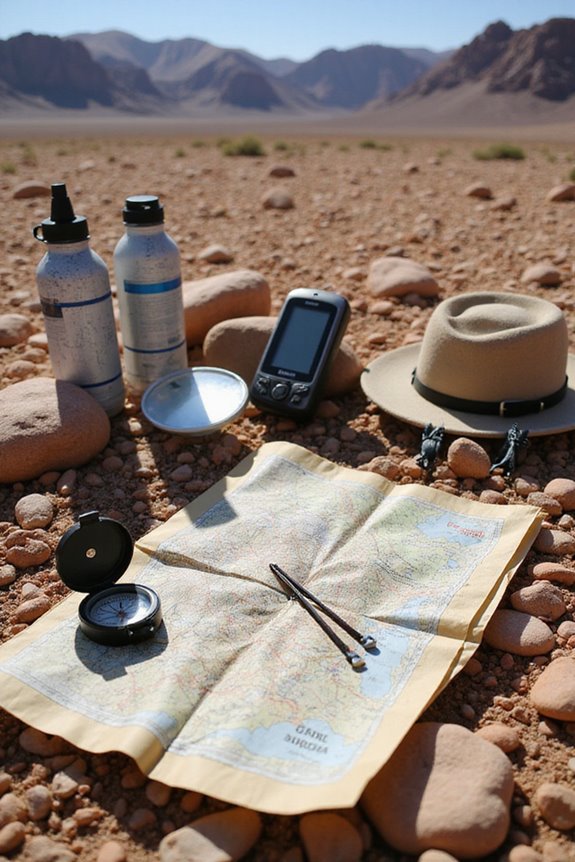
When we think about traversing the vast and mesmerizing desert, planning and safety strategies become our trusty guideposts, ensuring we don’t find ourselves lost in a sea of sand! First up, route optimization is key—study those topographic maps like a treasure map, marking out key landmarks to avoid navigational confusion. We’re not just wandering blindly here!
Next, let’s chat about hazard awareness. We’ve gotta keep an eye on our surroundings, from sudden storms to tricky terrains. A reliable compass and GPS are our best friends, but don’t forget those backup tools—always be prepared! Consider using trekking poles with durable rubber tips for added stability when navigating uneven desert terrain. Finally, stay connected with loved ones, so they know when to send out the rescue party if we stray too far off course. Happy exploring, desert adventurers!
Frequently Asked Questions
What Should I Wear for Desert Navigation?
When we’re preparing for desert navigation, we should prioritize sun protection and breathable clothing. Proper desert footwear is essential too, giving us the comfort and safety needed for our adventurous journey under the blazing sun.
How Can I Protect My Equipment From Sand?
To protect our equipment from sand, we should use sandproof bags and apply protective covers. These simple measures keep our gear safe and functional, allowing us the freedom to explore and enjoy the desert landscape.
What Are the Best Training Practices for Desert Navigation?
We shouldn’t shy away from mastering the art of exploration. With sharpened compass skills and practiced map reading, we’ll navigate the vastness together, embracing both challenges and the freedom that comes with every journey.
How Do I Identify Safe Water Sources?
When we’re out there, water source identification becomes essential for survival. By observing nature and employing smart methods, we’re enhancing our desert survival skills, ensuring we find safe water while embracing the wilderness’s freedom.
What Should I Do if I Get Lost?
If we find ourselves lost, let’s mark landmarks for guidance and remain calm. We can use emergency signaling tools to attract attention, ensuring we stay aware of our surroundings and build a plan for safety.

